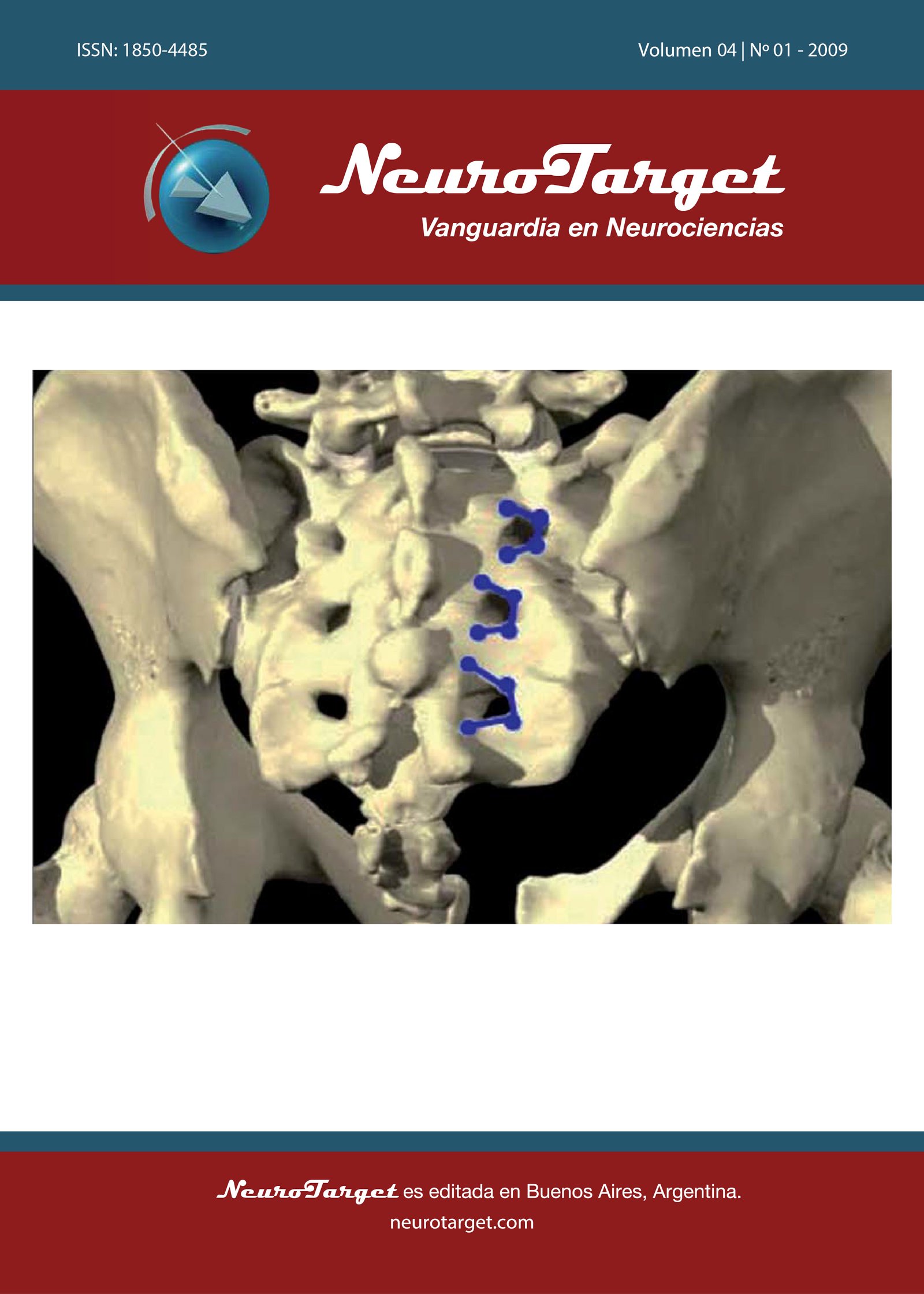Comparison of balanced general anesthesia and total intravenous anesthesia for percutaneous balloon microcompression of the Gasser ganglion in trigeminal neuralgia
DOI:
https://doi.org/10.47924/neurotarget2009335Keywords:
remifentanil, propofol, blood pressure, heart rate, trigeminal neuralgia, microcompression of the gasserian ganglionAbstract
Objective: To compare the effectiveness of two anesthetics schemes, the balanced general anaesthesia versus total intravenous anaesthesia (TIVA) for hemodynamic control in patients undergoing retrogasserian balloon microcompression for trigeminal neuralgia.
Patients and method: A retrospective trial was conducted in thirty patients aged between 37 and 82 years old, ASA I and II. The participants were allocated randomly to receive balanced general anaesthesia (BGA), Group A, with isoflurane/fentanyl, or total intravenous anaesthesia (TIVA), Group B, with propofol/ remifentanil. The systolic, diastolic and mean arterial pressure, heart rate, and oximetry were evaluated through the anesthesia periods. Statistical analysis comprised the Student t test for continuous variables and x² (chi-square) for qualitative variables.
Results: Group A had higher blood pressures during the period of mayor surgical stimulus. The scheme propofol/remifentanil obtained better hemodynamic control and it’s easier management.
Conclusions: The Group B’s hemodynamic response was better. Furthermore, the predictable recovery of TIVA is an attractive alternative to BGA. Moreover, the atropinización after the procedure is a measure that could benefit patients.
Metrics
References
Mullan S, Lichtor T. Percutaneous microcompression of the trigeminal ganglion for trigeminal neuralgia. J Neurosurg. 1983 Dec;59(6):1007-12.
Añez C, Rodríguez-Pérez A, Morales F, Partida C. Reflejo trigemino-cardiaco durante la compresion del ganglio de Gasser. Rev Esp Anestesiol Reanim. 1994 Ene-Feb;41(1):42-3.
Egan TD, Lemmens HJ, Fiset P, Hermann DJ, Muir KT, Stanski DR, et al. The pharmacokinetics of the new short-acting opioid remifentanil (GI87084B) in healthy adult male volunteers. Anesthesiology. 1993 Nov;79(5):881-92.
Hall AP, Thompson JP, Leslie NA, Fox AJ, Kumar N, Rowbotham DJ. Comparison of different doses of remifentanil on the cardiovascular response to laryngoscopy and tracheal intubation. Br J Anaesth. 2000 Jan;84(1):100-2.
Bouillon T, Bruhn J, Radu-Radulescu L, Bertaccini E, Park S, Shafer S. Non- steady state analysis of the pharmacokinetic interaction between propofol and remifentanil. Anesthesiology. 2002 Dec;97(6):1350-62.
Sneyd JR, Andrews CJ, Tsubokawa T. Comparison of propofol/remifentanil and sevoflurane/remifentanil for maintenance of anaesthesia for elective intracranial surgery. Br J Anaesth. 2005 Jun;94(6):778-83.
Zulueta L, Piedra García J, Ochoa L, López G. Cambios en la presión sanguínea durante la microcompresión retrogasseriana. Rev Cubana Cir 1997 Set-Dic;36(3):192-6.
Dominguez J, Lobato RD, Rivas JJ, Gargallo MC, Castells V, Gozalo A, et al. Changes in systemic blood pressure and cardiac rhythm induced by therapeutic compression of the trigeminal ganglion. Neurosurgery. 1994 Mar;34(3):422-7; discussion 427-8.
Beers R, Camporesi E. Remifentanil update: clinical science and utility. CNS Drugs. 2004;18(15):1085-104.
Dershwitz M, Randel GI, Rosow CE, Fragen RJ, Connors PM, Librojo ES, et al. Initial clinical experience with remifentanil, a new opioid metabolized by esterases. Anesth Analg. 1995 Sep;81(3):619-23.
Mertens MJ, Olofsen E, Engbers FH, Burm AG, Bovill JG, Vuyk J. Propofol reduces perioperative remifentanil requirements in a synergistic manner: response surface modeling of perioperative remifentanil-propofol interac- tions. Anesthesiology. 2003 Aug;99(2):347-59.
Downloads
Published
How to Cite
Issue
Section
License
Copyright (c) 2009 Patricia Heise, Marcos Babor

This work is licensed under a Creative Commons Attribution 4.0 International License.
The article is distributed under the Creative Commons Attribution 4.0 License. Unless otherwise stated, associated published material is distributed under the same licence.







